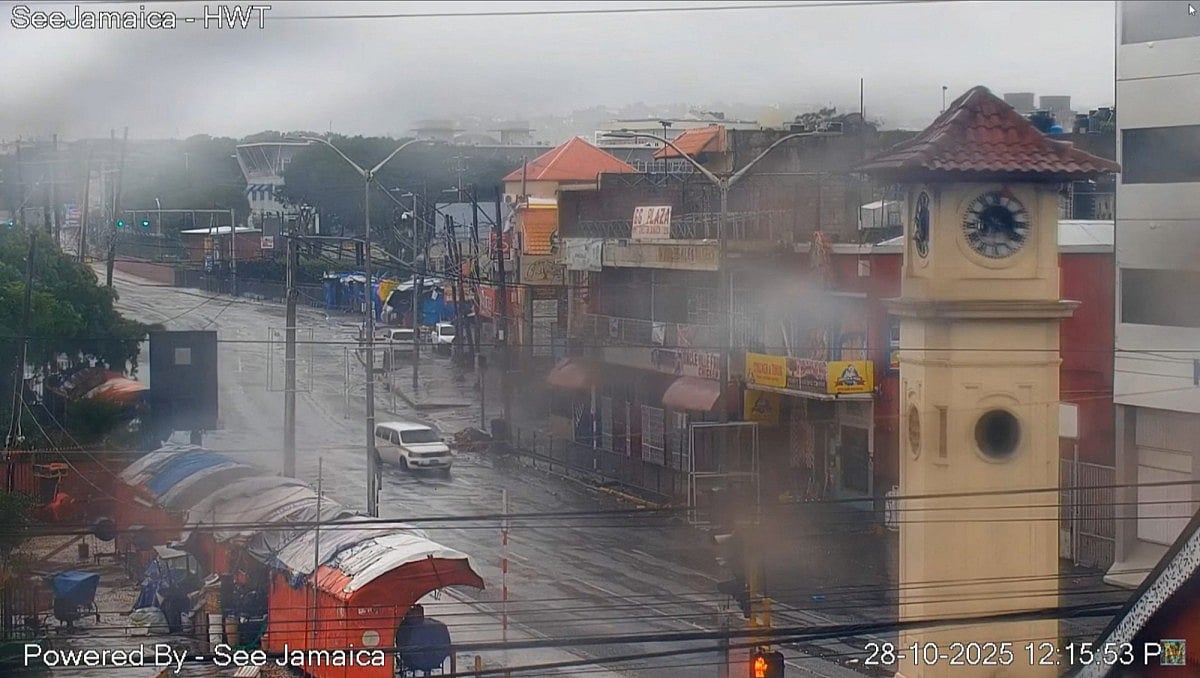Hurricane Melissa: Unprecedented Strength and Climate Impact
Hurricane Melissa has emerged as one of the most formidable storms in recent history, showcasing remarkable rapid intensification that has left scientists and meteorologists astounded. With wind speeds reaching unprecedented levels, Melissa’s behavior raises critical questions about the impact of climate change on hurricane patterns.
Extreme Rapid Intensification
Hurricane Melissa achieved what experts term “extreme rapid intensification,” gaining over 58 mph in wind speed within just 24 hours. In fact, it surged by approximately 70 mph during a single day, ultimately reaching maximum sustained winds of 175 mph. This rapid escalation is particularly notable, as it marks a significant deviation from typical hurricane behavior.
Phil Klotzbach, a hurricane researcher at Colorado State University, described Melissa as “a beast of a storm.” When it made landfall, it tied historical records for Atlantic hurricanes, both in terms of wind speed and barometric pressure. The storm’s pressure measurement matched that of the infamous 1935 Labor Day storm in Florida, while its wind speed equaled records set during Hurricane Dorian in 2019.
Unusual Behavior Near Land
Typically, hurricanes undergo an eyewall replacement cycle as they intensify, which can temporarily weaken the storm. However, Melissa exhibited unusual resilience, maintaining its strength despite being situated near the mountainous terrain of Jamaica. Brian McNoldy, a hurricane researcher at the University of Miami, noted that Melissa seemed unaffected by the island’s topography, which usually disrupts storm systems.
Another surprising aspect of Melissa’s behavior was its prolonged stay over warm waters. Hurricanes thrive on warm ocean temperatures, and while storms generally bring colder water to the surface when they linger, Melissa defied this trend. Bernadette Woods Placky, chief meteorologist for Climate Central, remarked on the storm’s ability to continue intensifying, attributing it to the unusually warm waters beneath the storm.
The Role of Climate Change
The connection between climate change and the intensity of hurricanes has become a focal point of scientific inquiry. Climate Central’s analysis suggests that the waters beneath Melissa were 500 to 700 times more likely to be warmer than normal due to human-induced climate change. This warming trend is believed to contribute significantly to the increasing frequency of Category 5 hurricanes.
Recent data indicates a marked rise in the number of Category 5 storms in the Atlantic. From 2016 to 2025, there have been 13 such storms, including three in the current year. This surge contrasts sharply with previous decades, where the frequency of Category 5 hurricanes was notably lower.
Historical Context and Future Implications
While historical records of hurricanes prior to the satellite era may lack reliability, the consensus among scientists is that a warming climate is likely to produce more intense storms. Klotzbach pointed out that the period from 2008 to 2015 saw no Category 5 storms, highlighting the variability in hurricane activity over time.
Woods Placky emphasized the direct correlation between ocean temperatures and the intensity of storms, stating, “When we see these storms go over this extremely warm water, it is more fuel for these storms to intensify rapidly.” This observation underscores the importance of understanding the implications of climate change on future hurricane patterns.
FAQs
What is extreme rapid intensification in hurricanes?
Extreme rapid intensification refers to a hurricane’s wind speed increasing significantly, typically by 35 mph or more within a 24-hour period. Hurricane Melissa experienced an increase of 70 mph in just one day.
How does climate change affect hurricane intensity?
Climate change contributes to warmer ocean temperatures, which provide more energy for hurricanes. This results in more frequent and intense storms, as seen with the rise in Category 5 hurricanes in recent years.
Why did Hurricane Melissa maintain its strength near Jamaica?
Hurricane Melissa defied typical behavior by maintaining its intensity despite being near mountainous terrain. This unusual resilience is attributed to the warm waters beneath the storm, which continued to fuel its rapid intensification.
Conclusion
Hurricane Melissa’s unprecedented strength and behavior highlight the evolving nature of storms in a warming climate. As scientists continue to study the implications of climate change on hurricane patterns, it is crucial to remain vigilant and prepared for the potential increase in storm intensity in the future. Understanding these dynamics will be essential for improving forecasting and response strategies in the face of increasingly powerful hurricanes.
Also Read:
Hurricane Melissa Threatens Jamaica with Catastrophic Impact







